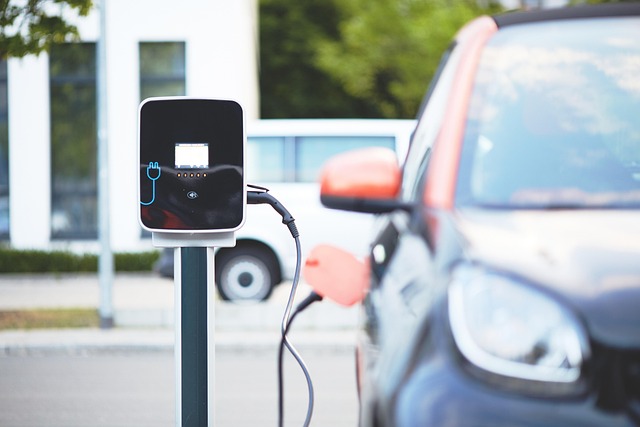Looking to register your car in California? This comprehensive guide will walk you through the entire process, from understanding crucial requirements to completing VIN verification. Gather essential documents, perform a vehicle identification number (VIN) check, and either submit your application online or visit a DMV office. Once approved, pay fees and receive your unique California license plate. Ensure everything is in order with this step-by-step approach, including efficient VIN verification.
- Understand California Car Registration Requirements
- Gather Necessary Documents for VIN Verification
- Perform Vehicle Identification Number (VIN) Check
- Complete Online Registration or Visit DMV Office
- Pay Registration Fees and Receive Your Plate
Understand California Car Registration Requirements

Before registering your car in California, it’s crucial to understand the state’s specific requirements. One key aspect is ensuring accurate and up-to-date vehicle identification number (VIN) verification. This process involves confirming the VIN on the vehicle matches the information in the manufacturer’s records. In California, this is typically done through a mobile VIN verifier or inspection service, which can verify the vehicle’s history and ensure it meets all legal standards before registration.
Additionally, you’ll need to provide essential documents, such as proof of ownership, valid insurance, and a completed registration application. A mobile VIN inspection service can streamline this process by offering on-site verification, saving time and effort compared to traditional methods. This ensures that when you bring your vehicle to the California Department of Motor Vehicles (DMV), all required documentation is in order, facilitating a smooth and efficient registration experience.
Gather Necessary Documents for VIN Verification

Before heading to the California Department of Motor Vehicles (DMV) to register your car, ensure you have all the necessary documents for a smooth vin verification process. This includes your vehicle’s registration certificate, proof of insurance, and identification documents such as a valid driver’s license or state ID card. Additionally, gather important paperwork related to ownership transfer if applicable, like the bill of sale.
For a more convenient vin inspection, consider using a mobile vin verifier service. These professionals can conduct the necessary checks on-site, saving you time and effort. Alternatively, some services offer remote vin inspection options, allowing you to complete the verification process from the comfort of your home.
Perform Vehicle Identification Number (VIN) Check

Before registering your car in California, it’s crucial to perform a Vehicle Identification Number (VIN) check. This step is essential for verifying the vehicle’s history and ensuring it meets all legal standards. A mobile VIN inspection or verifier can make this process convenient by providing on-site services, allowing you to confirm critical details like the vehicle’s age, previous ownership, and any reported accidents or damages.
By utilizing a mobile vin verification service, you can save time and effort compared to traditional methods. These services offer accurate and swift VIN checks, which are essential for a smooth car registration process in California. Ensure that your vehicle is road-ready and compliant with all regulations before completing the registration.
Complete Online Registration or Visit DMV Office

You have two options for registering your car in California: complete the process online or visit a DMV office in person. Both methods involve gathering essential documents and providing accurate information to ensure a smooth registration experience. If you choose the online route, you’ll first need to perform a Vehicle Identification Number (VIN) verification through a trusted service, often offered by mobile vin verifiers, to confirm your vehicle’s authenticity and history. This step is crucial for preventing fraud and ensuring compliance with state regulations.
Once your VIN inspection is complete, you can proceed with the online registration process, which typically involves filling out an application form, uploading required documents such as proof of insurance and ownership, and paying the associated fees. Alternatively, if visiting a DMV office, you’ll need to bring all necessary documentation in person for inspection. The staff will guide you through the process, ensuring your car is registered correctly and legally on California roads.
Pay Registration Fees and Receive Your Plate

After completing your vehicle’s registration application and gathering all necessary documents, it’s time to pay the registration fees. These fees vary based on the type of vehicle and its age. You can typically pay online or in person at a California Department of Motor Vehicles (DMV) office. Once your payment is processed, you’ll receive your vehicle’s license plate. This process might be faster if you’ve opted for mobile vin verification, allowing a qualified inspector to conduct a vin inspection remotely, ensuring a smoother registration experience.
Before leaving the DMV or after receiving your plates, make sure to update your vehicle’s records with any changes in ownership or address. Properly registered vehicles are crucial for road safety and legal driving, so always ensure your information is accurate and up-to-date.
Registering a car in California involves understanding state requirements, gathering essential documents for VIN verification, and either completing the process online or visiting a DMV office. After confirming your vehicle’s identity through a VIN check, you’ll pay the necessary registration fees and receive your unique license plate. This straightforward process ensures legal compliance and allows you to hit the road with confidence. Remember to keep your documentation up-to-date for smooth driving experiences in the Golden State.
